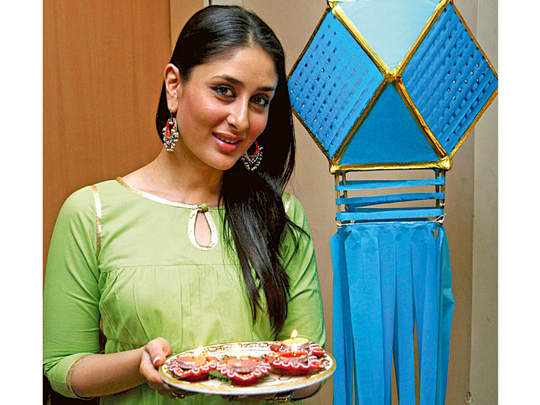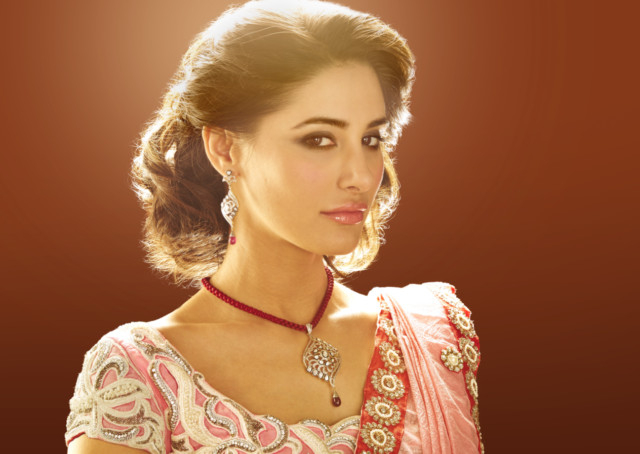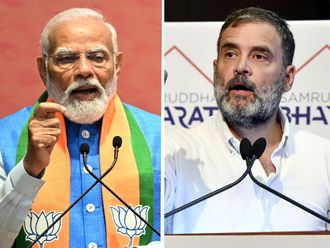
Quick: how many memorable Diwali scenes in Hindi films can you recall?
If you got more than three, congratulate yourself; good Diwali scenes are hard to come by in Hindi cinema.
Now let me guess: the first scene that came to mind was probably from Zanjeer, in which a frightened young boy hides in a cupboard, listening to the noise of crackers exploding all around him and watching his life being blown to bits by a man on a white horse who kills his parents. Not exactly your traditional Diwali scene, but it is the opening sequence in a landmark film, one that explains the genesis of the Angry Young Man.
Zanjeer was, of course, the film that propelled Amitabh Bachchan to stardom. Coincidentally, the other Diwali episode that most will remember is in Kabhi Khushi Kabhie Gham, starring, once again, Bachchan. In this movie, the now-greying superstar played the paterfamilias overseeing the Diwali puja and celebrations in his large household. Unlike the Zanjeer scene, this one was as traditional, glitzy and mushy as Diwali (or director Karan Johar) could get.
There’s another happy Diwali scene that most will recall. Balraj Sahni singing the ever-romantic Ae Meri Zohra Jabeen to his on-screen wife, Achala Sachdev, in Waqt. Followed by the heartbreakingly beautiful episode in Shakti Samanta’s Anuraag, when an entire neighbourhood gets together and stages a Diwali celebration to fulfil a young boy’s dying wish.
Slow disappearance
But after these, you’re down to the bottom of the barrel. Yes, there are quite a few others: the three couples of Mohabattein singing Pairon Mein Bandhan or Mere Tumhare Sabke Liye Happy Diwali in Home Delivery, for instance. But you wouldn’t quite call these songs memorable.
Ironic, isn’t it, that Hindi cinema’s most effective Diwali sequence is a dark, tormented one? If Diwali is synonymous with diyas, the most famous diya in Hindi film history — Paro’s in Devdas — had nothing to do with Diwali. (Though the visual remained a favourite with fireworks manufacturers for years.)
And isn’t it strange that Diwali, the biggest pan-Indian festival, doesn’t seem to have inspired too many film-makers? It is Holi that is far more popular, with its camera-genic riot of colours and — let’s not underestimate the value of this — the opportunity to drench the heroine who is serendipitously dressed in a thin white saree or kurta.
Diwali enjoyed far more popularity in Bollywood off-screen until a few years ago. Film shootings took a break, the crew got fat bonuses, stars gave their loyal factotums extravagant gifts, producers sent the stars (and some journalists) mithai or dry fruit boxes, stars sent even more lavish ones in return.
On the professional side, producers battled it out for that precious Diwali release slot, banking on the fact that, whatever their film’s merits (or lack of them), the festive mood would propel audiences to the theatres. Diwali releases were planned a full year in advance, films that were ready waited to take advantage of that slot.
Quite a bit of all that still happens, of course. It’s just not that important any more.
Party fever
On the fun side, the parties still swing and the undisputed party king, Jeetendra, along with his daughter Ekta, still convert their Juhu home into a desi casino. Party regulars such as Rakesh Roshan, Rishi Kapoor, Akshay Kumar, Shah Rukh Khan, Karan Johar, Shabana Azmi and Javed Akhtar further the festivities. However, note that all the names mentioned are in the 40+ category except Ekta Kapoor, who’s pretty close at 38.
While you will find stars and directors from the younger lot dropping in at card parties to keep their producer or director happy, it’s really not their scene. Most of them prefer to party on their own in India or escape overseas where they can have more privacy. Besides, so many films shoot abroad these days and the cast are not likely to return to India for Diwali or any other festival.
The winds of change are blowing over the box office too. Diwali (especially when it coincides with Eid) is still numero uno when it comes to a release slot. The battle for it can get acrimonious, as it did last year when Ajay Devgn took on the combined might of Yashraj Films and Shah Rukh Khan. Devgn accused Yashraj of hogging the screens for Yash Chopra’s Jab Tak Hai Jaan, leaving his own Son of Sardar lagging behind. The two sides have yet to forgive each other.
Shah Rukh Khan does love the Diwali slot, releasing many of his films, including Ra One, Don and Om Shanti Om during the festival. All of them have been hits, justifying his predilection.
Om Shanti Om saw another face-off six Diwalis ago: Shah Rukh and Farah Khan took on Sanjay Leela Bhansali’s Saawariya in a famously bitter battle for the crowds.
Losing out?
But the festival is not that important any more; any stretch of holidays or even a long weekend will do instead, as the make-or-break window for most films is now down to the first three or four days. That’s all they need to rake in the rupees from advance bookings and weekend collections before bad reviews or word-of-mouth publicity can do any damage.
Thus it is that Besharam released on Wednesday, October 2, a public holiday in India, hoping to sustain the momentum until the weekend. That it didn’t is another matter.
This year’s big Diwali release, Rakesh Roshan’s Krissh 3, starring his son Hrithik, was first scheduled to release on Monday, November 4, owing to Rakesh’s supreme confidence in the film and the combined clout at the box office. Distributors later persuaded him to advance the release to Friday, November 1, to maximise collections.
There are enough stories about films that hit the jackpot at Diwali and films that didn’t; films that became blockbusters even with a perfectly regular release. It all boils down to the film itself of course. But who wants to take any chances with so many reputations and so much money at stake?
Diwali hits and misses
Bollywood has seen some big hits during Diwali — Dilwale Dulhaniya Le Jaayenge (1995), Kuch Kuch Hota Hai (1998) and Baazigar (1993). However, it has seen a number of flops as well — Saawariya (2007), Blue (2009).Here are the showdowns of the past ten years.
2012
Shah Rukh’s Jab Tak Hai Jaan trumps Ajay Devgn’s Son of Sardar
2011
It’s a clear field for Shah Rukh Khan’s Ra.One
2010
Golmaal 3 takes away all the moolah, Action Replayy crashes
2009
All the Best, Blue, and Main Aurr Mrs Khanna — the former wins
2008
Golmaal Returns makes the money, Fashion wins the awards
2007
Om Shanti Om wins versus Saawariya
2006
Don wins against Shirish Kunder’s Jaan-e-Mann
2005
Garam Masala wins over Kyon Ki
2004
Veer Zaara makes the money, but Mughal-e-Azam the acclaim
2003
A commercially lacklustre year, only Pinjar wins with critics













